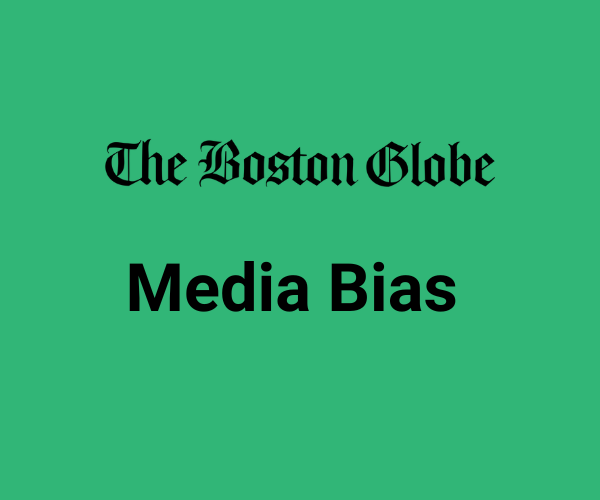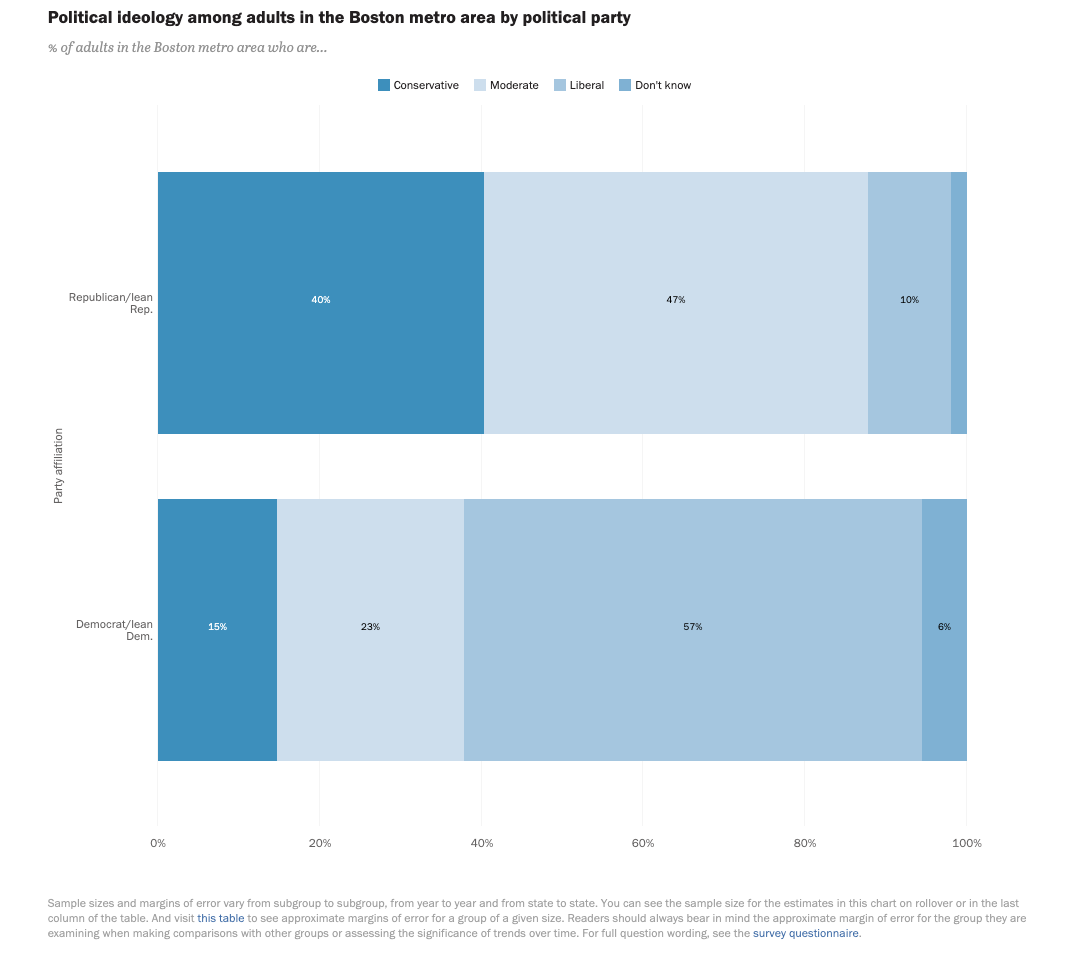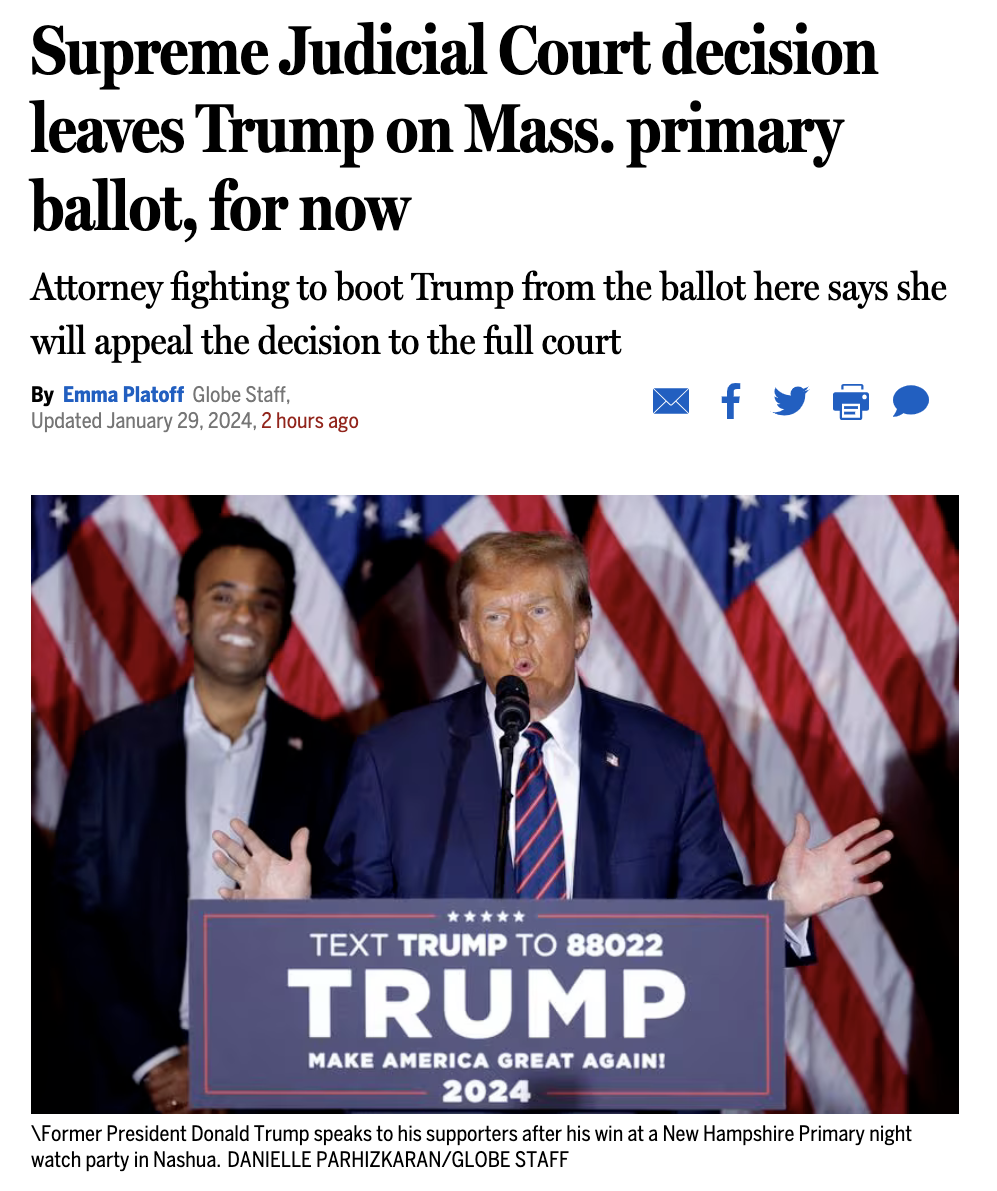
The Boston Globe was founded in 1872 by a group of Boston businessmen. It is the oldest and largest daily newspaper in Boston, Massachusetts, with its headquarters located in the city. The paper covers local, regional, national, and international news, as well as sports, art, music, theater, food, and culture. It is known for its strong connection to the community and its impact on public policy. With an average of 9.3 million monthly viewers and 27 awarded Pulitzer Prizes, The Boston Globe is influential and innovative with its digital journalism. It is also notable that there is a separate column for opinion pieces and commentaries.
While statistical analysis of the Boston Globe audience’s ideological stances is not available, we can observe the general political climate in Boston for proper reference. For the first group (n=149), 40% of those surveyed were found to hold beliefs that aligned with conservative views. The second group (n=286), 57% of the individuals surveyed were found to have opinions associated with liberalism.

Source: Pew Research Center
The Boston Globe is known to be more left-leaning. In this article, the organization’s coverage will be analyzed to determine how political bias is present. Identifying bias surrounding the reporting of news will allow the public to recognize it in the future.
How Does Biasly Rate News Sources?
Biasly’s algorithms produce bias ratings to help provide multiple perspectives on given articles. Biasly has analyzed 200,000+ news articles from more than 3,200 news sources through our A.I. technology and team of political analysts to find the most factual, unbiased news stories.
Biasly determines the degree of political bias in news sources by using Biasly’s Bias Meter Rating, in which Biasly’s team analyzes media sources’ reliability and bias and produces three scores, a Reliability Score that measures the accuracy of media sources; an A.I. Bias Score, evaluated by A.I.; and an Analyst Bias Score evaluated by political analysts. These scores are rated based on seven rating metrics including Tone, Tendency, Diction, Author Check, Selection/Omission, Expediency Bias, and Accuracy. These metrics help our analysts to determine the political attitude of the article.
Our A.I. machine-learning system employs natural language processing and entity-specific sentiment analysis to examine individual articles and determine their bias levels. By analyzing the key terms in an article such as policies, bias phrases, political terminologies, politicians, and their nicknames, the algorithms can rate the attitude of the text. Bias scores range from -100% and 100%, with higher negative scores being more liberal and higher positive scores being more conservative, and 0% being neutral.
Does The Boston Globe Have Bias?
Biasly’s rating for The Boston Globe comes from two scores, with the first originating from computer algorithms based on A.I. technology and the second coming from trained analysts. Biasly categorizes the Computer Bias Score as “Moderately Liberal,” and the Analyst Bias score as “Somewhat Liberal”. These associations mean that the topics covered are occasionally written from a moderately liberal perspective. An average of fifteen articles are examined by the Biasly analyst team to provide an accurate rating. The score will become increasingly precise as more articles are reviewed. The assigned scores are also similar to those of several third-party bias research agencies, further supporting Biasly’s ratings.
The Boston Globe does well not to take sides in many of its articles, but there are exceptions, which accounts for its bias. Jeff Jacoby, a columnist at the Boston Globe, acknowledges the liberal tilt that many media sources contain. In “Mainstream media needs to accept, own its liberal bias,” he writes:
“Liberal media bias isn’t merely in the eyes of conservative beholders. Large pluralities of the public routinely tell pollsters that the news media are too liberal. At least some journalists concede the point. There are so many left-leaning journalists, ABC’s then-political director Mark Halperin observed in 2006, “that it tilts the coverage quite frequently, in many issues, in a liberal direction.”
He explains that the media should accept its particular biases instead of disguising them. This honest suggestion can be applied to the Boston Globe so that its preferences are made open to the public. Jacoby continues:
“Better to have media bias than media that only pretend not to take sides. As long as news organizations don’t hide or deny their strong partisan leanings, viewers and readers can make up their own minds.”
That being said, The Boston Globe is typically open with its preferences. In the early 2000s, former editorial editor Renèe Loth said:
“The Globe has a long and proud tradition of being a progressive institution, especially on social issues,” she says. “We are pro-choice; we’re against the death penalty; we’re for gay rights. But if people read us carefully, they will find that on a whole series of other issues, we are not knee-jerk.”
The Boston Globe is forthcoming with the fact that, as a company, it supports Democratic ideals. This knowledge enables the reader to be cautious of any political preferences that may be present in news reports.
Before we begin, we need to discuss bias. Bias is a natural function of humans, and we can express it both consciously and unconsciously. Bias is one of the most fundamental forms of pattern recognition in humans. This isn’t to lower the bar and say that “all things are biased,” but to explain the process in which we may come to trust certain news organizations that display patterns of coverage.
On the media’s part, there is an incentive to retain audiences, encourage them to purchase subscriptions, and rate products positively. Bias is a two-way street, people want to see news stories about things they care about, and the media needs viewers to continue their operations. This creates a positive feedback loop that influences what stories are covered and from what perspective. This also explains the actions of more liberal news organizations.
Analysis of Bias in Boston Globe Articles
The most common categories that must be considered when analyzing bias include tone, tendency, author, diction, and expediency bias. The tone reflects the author’s opinion, attitude behind the article, and expressed preference of one political agenda over another. Tendency describes the frequency in which tone occurs throughout a report and looks at how often a particular bias is applied. The author metric examines the background of the author of an article and discerns possible affiliations and biases, especially through inspection of their social media. Diction relates to the language used throughout a piece, and whether there are words included meant to inspire an emotional reaction in the reader. Expediency bias refers to the initial impression the reader receives from a headline, subtitle, or image. All of these metrics must be analyzed collectively to determine which way articles lean on the political spectrum.
The first article we will observe is “James Lankford defends bipartisan border security bill after attacks by Trump, GOP,” by Amy B Wang. The article does a satisfactory job of portraying the facts surrounding the security bill being debated by both major political parties. The tone is consistently neutral throughout the piece, with the author providing perspectives from both Republican and Democratic officials. The only indication of bias is the diction used to occasionally describe certain opinions, such as when Trump’s viewpoint was described.
“Trump, who is running for reelection and who decisively won the GOP’s first two nominating contests this month, blasted the would-be bipartisan deal as a potential political “gift” to Democrats during an election year. On Saturday, Trump bragged about inserting himself into the debate and stymieing efforts to get the bill passed, even though he is not in office.”
Words such as “blasted” and “bragged” may elicit a certain response from the reader, as they are usually associated with negative qualities. Another example of such word choice follows:
“Some Republicans’ goal to dramatically curtail Biden’s use of his humanitarian parole powers for certain categories of migrants is not in the final deal, they said.”
Wang describes the details of the bill but describes the Republican effort to be a dramatic endeavor. Despite these minor instances, she does well to include different perspectives and thoroughly quotes James Lankford, one of the important subjects of the article. For reasons such as these, Biasly rated this as “Center.” However, it is still necessary to recognize the bias that lies in seemingly neutral reports.
Next, let’s discuss expediency bias. The reports in The Boston Globe do an appreciable job of creating headlines and using images that do not indicate a political preference. Many of the headlines describe the main talking point of the article without using unnecessary buzzwords, and images typically portray the individual(s) most frequently mentioned. However, the images used are sometimes less favorable to specific people. For example, the article “Supreme Judicial Court decision leaves Trump on Mass. primary ballot, for now” by Emma Platoff, leads with this picture:

The headline and subtitle portray presidential candidate Donald Trump in a precarious situation, in which it is alluded that his name is only temporarily included on the Massachusetts primary ballot. The title would be more neutral if it chose words other than “boot Trump from the ballot,” instead opting for more objective language. The picture itself portrays Trump in an unflattering manner, which may be disconcerting to potential readers.
Biasly’s News Check Chrome Extension rates this article as “Moderately Liberal.” The tone itself remains neutral through much of the piece, with many objective facts being listed. For example, the article explains that other states are also attempting to prevent Trump from appearing on their ballot.
“In Maine, the secretary of state last month barred Trump from the state’s Republican primary, and in Colorado, the state Supreme Court also ruled Trump was ineligible. The decision in that case is on hold, with the Supreme Court set to hear arguments in it on Feb. 8. The high court’s decision could carry major implications for local efforts to bar Trump from appearing on the ballot.”
The news in this article is mostly informative rather than opinionated; however, several quotes from the piece show a left-leaning tilt. For example, Shannon Liss-Riordan, an attorney leading the effort against Trump, was quoted saying:
“Somehow, because this is Donald Trump, everyone seems to be bending over backward for a way to prevent our courts from adjudicating the constitutional case on the merits.”
Justifications from Justice Frank M. Gaziano are included as well, but there is little coverage on those who might support Trump’s initiative to be included on the ballot. The aforementioned quote exhibits a disdain for the former president and his agenda. The slight left tendency witnessed here is the occurrence of left-leaning tone throughout the article.
Another article to observe is “Biden must campaign against a man who already thinks he’s president,” by Katie Rogers. Biasly rated this as “Center,” although we must look for more nuanced inclusions of bias. The article specifically discusses Trump’s opinions on the immigration deal currently being discussed in Congress. While the views of both Democrat and Republican individuals are shared, the language offers a slightly unfavorable view of those on the right.
“The president’s frustrations boiled over Friday night as he fought to save an immigration deal from collapse in Congress. Trump has spent weeks pressuring lawmakers to oppose the deal, and Republicans appear unlikely to defy him.”
The tone throughout this piece focuses more on liberal ideas than conservative ones, and the information about right-leaning individuals is not positive. The diction utilized, specifically “Republicans appear unlikely to defy him,” creates a somewhat threatening picture of Donald Trump that may sway readers. Some of the quotes incorporated in this article also negatively portray Republicans.
“‘Current and former advisers to Biden say the deadlock over immigration highlights one of the president’s sharpest cases for reelection. The border policy fight, steered by Trump, is “putting on display for the American people where Donald Trump and the Republicans’ priorities are, which is not actually solving problems but instead scoring political points,’ said Kate Bedingfield, Biden’s former communications director.”
This clearly criticizes Republican officials and promotes a cynical view of Trump. The title of the article alone shows left-leaning expediency bias, encouraging the reader to form a preconceived opinion about the former president. The biases held by Katie Rogers can be observed in some of her Twitter posts and reposts, in which she indirectly shares her view on the immigration bill, Donald Trump, and other topics.
Some very good stories from the NYT White House team this week – @KannoYoungs on humanitarian parole, how Biden has used it to help refugees and how Republicans want to limit it https://t.co/bBxmRWOCwg
(1/ )
— Katie Rogers (@katierogers) January 25, 2024
“At a campaign rally Monday, Trump struggled to enunciate his view that drug dealers should get the death penalty. He initially failed to pronounce ‘smallest,’ and then added, ‘We are an institute in a powerful death penalty. We will put this on.'” https://t.co/YLqeab6mmH
— Katie Rogers (@katierogers) January 24, 2024
The three reports above display elements of left-leaning bias, but the type and level of bias differ between articles and authors. As such, it is important to understand the signs of bias, even when looking at several articles from the same organization. Viewers should be conscious of tone, tendency, diction, author, and expediency bias in everything they read.
Let’s look at an article that has little bias. The article “Pakistan retaliates with strikes inside Iran as tensions spill over,” by Salman Masood and Farnaz Fassihi is rated as “Center” by Biasly. The authors describe the newest tensions between Iran and Pakistan after an exchange of conflict but do so objectively and factually. This allows the reader to understand the situation while not being influenced to view it through a particular lens.
Analysis of Boston Globe Opinion Articles
The difference between opinion and reporting should be distinguished before going further. News reports are designed to be unbiased, objective, and factual accounts of information from primary sources so that the reader can form their own views. Opinion articles are pieces that portray the author’s personal insights on a topic. The Boston Globe has a separate opinion column on its website, making it easier to discern fact from speculation.
The first article we will look at is “Healy and Wu feel the squeeze over the migrant crisis,” by Joan Vennochi, which was rated as “Moderately Liberal” by Biasly’s News Check Chrome Extension. This piece offers a particularly harsh view of Republicans and Donald Trump, with several negative comments about their role in the “migrant crisis.”
“Of course, in a presidential election year, Donald Trump does not want anything to happen on the immigration front that Biden could categorize as a success. So Trump called upon his flunkies in Congress to scuttle a compromise immigration bill that a bipartisan Senate group was said to be finalizing. Subservient as ever to Trump, House Speaker Mike Johnson has made it clear that any immigration deal is dead on arrival. Meanwhile, House Republicans are also leading the charge on an impeachment effort against Homeland Security Secretary Alejandro Mayorkas for his handling of the border. It’s standard-issue Republican politics, for which Biden to date has no answer.”
The language used paints the Republican party in an unfavorable light, stating that inaction is “standard-issue Republican politics.” This clearly shows liberal bias and an absence of views from the other side of the spectrum in an attempt to describe the current immigration issue.
The next opinion article we will observe is “Politicians look to God and the Bible to do their heavy lifting,” by Alex Beam. Biasly’s News Check Chrome Extension categorized this piece as “Moderately Liberal.” The views expressed in this article are entirely subjective, and the information does not adequately describe the interconnection that is sometimes present with religion and politics. When mentioning Republican Speaker of the House Mike Johnson, Beam writes:
“It’s darkly comical that while Johnson claims that the Bible directly informs his worldview, he retains the right to edit the text as needed. When reminded that God instructed us to welcome strangers (Leviticus 19: 33-34; “And if a stranger sojourn with thee in your land, ye shall not vex him … thou shalt love him as thyself”), the anti-immigration exegete has explained that God is instructing his followers, not the government, to welcome strangers among them.”
There is an absence of explanations and talking points from those being mentioned in this article. While the examples given are only a small sample of the articles found on The Boston Globe, it is crucial that readers understand the difference between its factual reports and opinion columns.
Who Owns The Boston Globe?
The Boston Globe is owned and published by John W. Henry. He purchased the paper in 2013 from the New York Times Company, making him the third owner in its history. Henry purchased the Globe (and other media properties) for $70 million, and has partnered with The New York Times Company in his purchase of other assets. The New York Times has an overall left-lean bias, which could describe some of the left-leaning tendencies of The Boston Globe.

John W. Henry, Source: Wikipedia
How to Evaluate and Uncover Bias
It can often be difficult to tell if the news you watch is biased. If you have settled on a news channel, it’s usually because you trust the information you are gaining. Unfortunately, many trust the information they are hearing because it confirms what they already believe. This is referred to as “confirmation bias.” It is important to challenge your beliefs and get third-party verification that what you are hearing is the full story. This is why we recommend using Biasly to compare different news stories side-by-side using our bias ratings to figure out what both sides think of a political issue.
Once again, Biasly rates The Boston Globe as “Somewhat Liberal.” It is important to remember that many articles are considered “Center” and provide largely neutral reports of current events. However, readers must still be aware of left-leaning bias when looking at this organization. The opinion column in particular promotes a considerable amount of liberal views. The same bias will not be included in every report, so the viewer must also be cognizant of the rating metrics discussed earlier so that they are aware of potential bias in their news. Individuals can utilize Biasly’s News Check to help with discovering bias.























